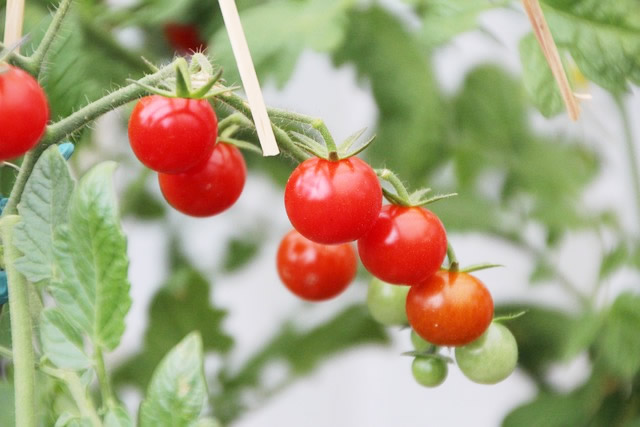先日から「The complex climate truth about home-grown tomatoes -「自家製トマトにまつわる気候の真実」を読んでいます。

・「自家製トマトにまつわる気候の真実」(1)
・「自家製トマトにまつわる気候の真実」(2)
・「自家製トマトにまつわる気候の真実」(3)
For urban agriculture, gardeners across 73 small sites in the UK, US, Germany and Poland were tasked with keeping diaries or logging their methods and the infrastructure they use – such as raised bed materials.
都市農業については、イギリス、アメリカ、ドイツ、ポーランドの73の小規模農園で、庭師たちが日記をつけたり、自分のやり方や、レイズドベッドなどのインフラの記録が課せられた。
The urban agriculture category did not include vertical farms, which tend to be very energy intensive.
都市農業のカテゴリーには、エネルギーを大量に消費しがちな垂直農法は含まれていない。
The results for conventional agriculture, relying on a huge range of data sources, were conspicuously narrow – everything settled on or around 0.07kg of CO2e per serving.
在来型農業の結果は、膨大なデータソースに頼ったもので、1食あたり0.07kg / CO2e程度に収まるものが目立った。
Hawes says that this is actually unsurprising, given the economic pressures on the industry, which force it to be highly efficient.
ホーズ氏によれば、効率性を追求せざるを得ない業界への経済的圧力を考えれば、これは当然のことだという。
However, he accepts that it is “reasonable” to critique this comparison of urban and conventional agriculture samples, given that the samples for each are of such different sizes.
しかし都市農業と慣行農業のサンプル比較は、それぞれの規模がかなり違うため、それを批判するのは「合理的」だと彼も認めている。
Also, to be clear, while the sample of 73 urban gardening sites related to 73 specific locations,
また明確にしておくと、都市園芸のサンプル73カ所は73の特定の場所に関連しているが、
the sample numbering 250 for conventional agriculture actually related to life cycle assessments, some of which may span multiple farms.
慣行農業のサンプル番号250は、実際にはライフサイクルアセスメント(環境影響評価)に関連しており、そのいくつかは複数の農場にまたがっている可能性がある。
この部分はちょっと内容が難しいなと感じますが、家庭菜園と商業農法を比べる時に、少し不公平感と言うか、条件が同じではないことは認識している、という感じですかね。
何でも物事を本当に均等に性格に比べたり測ったりは難しいものだと思います。
理由は単純明快!「少ないコストでしっかり楽しく学べるから」。
私自身の経験(高機能でビックリ)をびっしり書いていますので、良かったら読んでみてください。
下のバナーからどうぞ!






